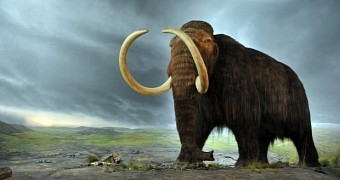It's been ages since the last woolly mammoths walked the Earth. If scientists in Russia get their way and manage to clone a specimen or two, however, the species might make a comeback.
Just to put things into perspective, woolly mammoths would grow to stand about 9 to 11 feet (2.7 to 3.4 meters) tall and weigh some 6.6 tons. So, yes, we're talking one heck of a comeback.
Researchers really mean to try and clone such a beast
Earlier this year, during the summer months, the remains of six woolly mammoths were recovered from one of the Lyakhovsky Islands in Arctic waters just off Siberia's north coast.
Among the remains, said to be about 10,000 years old if not more, scientists found some skin samples that, being frozen solid, turned out to be surprisingly well preserved, especially given their age.
Working closely with specialists in South Korea, Russian scientist Semyon Grigoryev and his team wish to try and extract so-called living cells from these skin samples.
The whole point of the project is to use the living cells to design and create a new woolly mammoth. Then, the specimen could be studied to learn more about the species, the scientists explain.
Admittedly, the research team hasn't yet managed to recover any living cells they so desperately need to succeed in their endeavor. Nonetheless, they are pretty confident it's only a matter of time until they'll get their hands on one or maybe more.
“Our Korean colleagues believe the skin is the best material for cloning attempts through finding viable cells. Now we are studying the skin in our new laboratory,” study leader Semyon Grigoryev told The Siberian Times in an interview.
Should they recover such living cells from the 10,000-year-old woolly mammoth skin samples, they plan to try and use them to clone the animal. Whether they will actually succeed remains to be seen.
The same site produced remains of a pygmy mammoth
In a report detailing their work, the specialists explain that the same site from which they pulled the preserved woolly mammoth skin also produced a tusk that appears to belong to a pygmy mammoth.
Remains of such miniature mammoths have so far only been discovered in present day California. For now, the team can't say if the supposed pygmy mammoth tusk found off the coast of Siberia is the real deal or if maybe it's just the tusk of a woolly mammoth that, for some reason, didn't grown very large.
“We have to figure out what it is: a micro population or an individual feature of this particular mammoth,” explained study leader Semyon Grigoryev in a statement.

 14 DAY TRIAL //
14 DAY TRIAL //